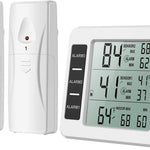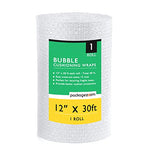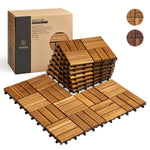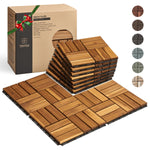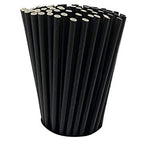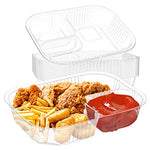You have no items in your shopping cart.
Flies can be incredibly bothersome creatures, constantly buzzing around and landing on anything they please. Not only are they annoying, but they can also pose a risk to our health by carrying disease-causing bacteria. If you're tired of dealing with flies invading your space, you've come to the right place. In this comprehensive guide, we will explore effective strategies and techniques on how to keep flies away. From natural remedies to preventive measures, we've got you covered.
Understanding the Habits and Attraction of Flies
Flies are attracted to certain things that humans find repulsive. Understanding their habits and attraction factors can help us in our quest to keep them at bay.
1. The Scent of Decay: A Fly's Favorite Perfume
Flies have a peculiar fondness for the scent of decay. They are drawn to decaying organic matter such as garbage, animal waste, and rotting food. To minimize their attraction, ensure proper waste management by sealing garbage cans tightly and disposing of waste regularly.
2. Sweet Temptations: Sugary Delights for Flies
The sweet aroma of ripe fruits, sugary drinks, and nectar can be irresistible to flies. To deter them, keep fruits and other sweet foods covered or stored in sealed containers. Additionally, clean up spills promptly to remove any sticky residue that might attract flies.
3. Dung and Filth: A Fly's Playground
Flies thrive in unsanitary environments, particularly in areas where there is animal waste or stagnant water. Regularly clean up after pets and ensure proper drainage to eliminate potential breeding grounds for flies.
4. Warmth and Moisture: Ideal Fly Conditions
Flies prefer warm and humid environments. When the weather is hot and humid, they tend to be more active. Ensure proper ventilation in your living spaces and use fans to keep the air circulating, making it less appealing for flies to settle.
Maintaining a Clean and Hygienic Environment
A clean and hygienic environment is crucial when it comes to keeping flies away. By eliminating their food sources and breeding grounds, you can significantly reduce their presence.
1. Cleanliness is Key: Regularly Tidy Up
Regular cleaning is essential to prevent flies from finding suitable environments to thrive. Clean up spills promptly, wipe down surfaces, and sweep floors regularly to remove any food particles or residues that might attract flies.
2. Garbage Disposal: Seal, Remove, and Clean
Proper garbage disposal is crucial in fly prevention. Seal garbage bags tightly and dispose of them regularly to prevent flies from feasting on the contents. After emptying the bins, clean them thoroughly to remove any lingering odors that may attract flies.
3. Pet Waste Management: Scoop and Dispose
If you have pets, it's essential to clean up after them promptly. Pet waste is a magnet for flies, so be diligent in scooping up their waste and disposing of it properly. Consider using pet waste bags and designated disposal areas to minimize the attraction of flies.
4. Kitchen Maintenance: Keep it Spotless
The kitchen is a prime target for flies due to the abundance of food sources. Keep your kitchen clean and free of crumbs and spills. Wipe down countertops, sweep the floors, and wash dishes promptly to eliminate any potential food sources for flies.
5. Organic Waste: Composting Best Practices
If you have a composting system, it's essential to manage it properly to avoid attracting flies. Use a covered compost bin and maintain a proper balance of green and brown materials. Turn the compost regularly to promote decomposition and discourage fly breeding.
Utilizing Natural Repellents
Nature offers a variety of substances that can repel flies naturally. These natural repellents are not only effective but also safe for both humans and the environment.
1. Citrus Power: Lemons and Oranges
Flies dislike the smell of citrus fruits, making them an excellent natural repellent. Place slices of lemon or orange in areas where flies are a problem, such as near windows or outdoor dining areas. The scent will deter flies from entering the space.
2. Herbs with a Punch: Mint and Basil
Mint and basil are not only delightful in culinary dishes but also effective in repelling flies. Plant these herbs in your garden or place potted versions near doors and windows to keep flies at bay. The strong aroma will discourage flies from entering your living spaces.
3. Essential Oils: Nature's Fly Repellent
Essential oils have gained popularity for their numerous benefits, including their fly-repellent properties. Peppermint, eucalyptus, lavender, and lemongrass essential oils are particularly effective. Dilute a few drops in water and spray the solution in areas prone to flies.
4. Vinegar: A Versatile Fly Deterrent
Vinegar is a versatile household item that can be used to repel flies. Create a mixture of equal parts water and white vinegar and use it to wipe down surfaces or spray it around areas where flies gather. The strong smell will discourage flies from lingering.
Blocking Entry Points
Preventing flies from entering your home or establishment is an essential step in fly control. By blocking their entry points, you can significantly reduce their presence indoors.
1. Seal Cracks and Openings: Keep Flies Out
Inspect your doors, windows, and walls for any cracks or openings that flies can use as entry points. Seal these gaps with caulk or weatherstripping to prevent flies from sneaking in. Ensure that screens on windows and doors are intact and free of holes.
2. Door Sweeps and Draft Stoppers: A Barrier for Flies
Install door sweeps and draft stoppers at the bottom of doors to create a barrier against flies. These simple devices can effectively block the gaps between the door and the floor, minimizing the chances of flies entering your living spaces.
3. Mesh Screens: Keep Flies at Bay
Mesh screens on windows and doors act as a physical barrier, preventing flies from entering while still allowing fresh air to circulate. Ensure that your screens are in good condition and properly fitted to keep flies out.
4. Fly Curtains: A Decorative Defense
Fly curtains, also known as insect curtains or bead curtains, are strands of beads or fabric that hang in doorways. They provide an extra layer of protection against flies while adding a decorative touch to your space. Flies are deterred by the movement and texture of the curtains.
Optimizing Outdoor Spaces
Flies are not limited to indoor areas; they can also be a nuisance outdoors. To enjoy your outdoor spaces without the constant buzzing of flies, consider implementing the following measures.
1. Clean Outdoor Areas: Remove Attractants
Regularly clean outdoor areas, such as patios, decks, and picnic areas, to eliminate potential fly attractants. Remove food scraps, spilled drinks, and pet waste promptly. By removing these enticing smells and sights, you can make your outdoor spaces less appealing to flies.
2. Use Outdoor Fans: Keep Flies on the Move
Flies are not strong fliers, and they struggle in breezy conditions. Install outdoor fans or use portable fans to create a continuous airflow in your outdoor areas. The constant movement of air will deter flies from settling and discourage them from bothering you.
3. Consider Umbrella Netting: Enjoy the Outdoors, Fly-Free
Umbrella netting provides a protective barrier around outdoor seating areas, keeping flies and other insects at bay. These mesh coverings are easy to set up and can be attached to patio umbrellas or pergolas. Enjoy your meals or leisure time outdoors without the annoyance of flies.
4. Maintain Landscaping: Minimize Fly-Friendly Environments
Well-maintained landscaping can help reduce the presence of flies in your outdoor spaces. Trim shrubs and trees regularly to allow for proper airflow and sunlight, preventing moist and shaded areas where flies thrive. Additionally, remove standing water or areas prone to puddling to discourage fly breeding.
Exploring Artificial Traps
Artificial traps can be effective in reducing fly populations by attracting and capturing them. These traps work by luring flies with enticing baits and then trapping them, preventing further reproduction and infestation.
1. Sticky Fly Traps: Catching Flies in a Sticky Situation
Sticky fly traps, also known as flypapers, are a classic and affordable method for trapping flies. These adhesive strips or ribbons can be hung in areas where flies are present. Flies are attracted to the trap and get stuck on the sticky surface, unable to escape.
2. Fly Catcher Bags: A Deadly Attraction
Fly catcher bags, commonly known as fly traps or fly bags, are designed to attract and capture flies. These bags contain a combination of fly attractants, usually in the form of food or pheromones, which lure flies into the bag. Once inside, they cannot escape, leading to their demise.
3. UV Light Traps: Zapping Flies Away
UV light traps, also known as fly zappers or electric fly traps, use ultraviolet light to attract flies. The light draws flies towards the trap, and upon contact, they are electrocuted. These traps are effective in controlling fly populations and are commonly used in commercial establishments.
4. Baited Jar Traps: Tempting Flies with Irresistible Bait
Baited jar traps are simple yet effective devices for trapping flies. Fill a jar with an attractive bait such as rotting fruit, vinegar, or sugar water. Cover the jar with plastic wrap and poke small holes in it. Flies are enticed by the scent, enter the jar through the holes, but find it difficult to escape.
Investigating Electronic Fly Control
Electronic fly control devices utilize modern technology to repel or eliminate flies. These devices are designed to be effective and convenient in managing fly populations.
1. Ultrasonic Fly Repellers: Silence for Humans, Discomfort for Flies
Ultrasonic fly repellers emit high-frequency sound waves that are inaudible to humans but highly uncomfortable for flies. These devices create an environment that flies find irritating, causing them to avoid the area. Simply plug in the ultrasonic repeller and let it do its job.
2. Fly Fans: Flying Away on a Breeze
Fly fans, also known as air curtains or fly deterrent fans, create a barrier of air that flies find challenging to fly through. These devices are commonly used in commercial establishments and can be installed above entrances to prevent flies from entering.
Implementing Fly-Repelling Plants
Certain plants possess natural properties that repel flies. By incorporating these fly-repelling plants into your surroundings, you can create an environment that is less attractive to flies.
1. Lavender: A Beautiful and Fragrant Fly Repellent
Lavender is not only visually stunning but also acts as a natural fly repellent. The strong aroma produced by lavender plants is unpleasant to flies, making them less likely to linger in the area. Plant lavender near entryways or in outdoor seating areas to deter flies.
2. Marigold: A Colorful Guardian Against Flies
Marigolds are vibrant flowers that not only add beauty to your garden but also repel flies. The scent of marigolds is known to deter flies and other pests. Plant marigolds in pots or flower beds near windows and outdoor gathering areas to keep flies at bay.
3. Basil: A Culinary Herb and Fly Fighter
Basil is not only a popular culinary herb but also an effective fly repellent. The strong aroma of basil plants acts as a natural deterrent for flies. Plant basil near doors, windows, or outdoor dining areas to discourage flies from entering.
4. Mint: Freshness that Repels Flies
Mint is a refreshing herb with a powerful scent that flies find repulsive. Plant mint in pots or designated areas to repel flies from your outdoor spaces. Additionally, you can crush fresh mint leaves and rub them on your skin as a natural fly repellent.
Modifying Lighting to Deter Flies
Flies are often attracted to certain types of lighting. By making strategic adjustments to your lighting choices, you can minimize the attractiveness of your space to flies.
1. Yellow Bug Lights: Fly-Friendly Illumination
Yellow bug lights, also known as amber or sodium vapor lights, emit a warm, yellow light that is less appealing to flies. These lights are designed to minimize attracting insects, including flies. Replace outdoor bulbs with yellow bug lights to reduce the presence of flies in the vicinity.
2. Avoiding Bright White Lights: Fly Magnets
Bright white lights, particularly those with a bluish tint, are highly attractive to flies. These lights mimic natural daylight and can draw flies in large numbers. Opt for warm, soft white lights instead, as they are less likely to attract flies.
Considering Professional Pest Control
If you've tried various methods and are still struggling with a significant fly infestation, it may be time to call in the professionals. Pest control experts have the knowledge and tools to effectively eliminate flies and provide long-term solutions.
1. Hiring a Pest Control Company: Fly-Free Expertise
Pest control companies specialize in identifying and treating fly infestations. They can assess the extent of the problem, determine the species of flies involved, and implement targeted treatments to eliminate the infestation. Consider hiring a reputable pest control company for effective fly control.
2. Integrated Pest Management (IPM): A Holistic Approach
Integrated Pest Management (IPM) is an environmentally friendly and effective approach to pest control. It combines various methods, such as inspections, monitoring, preventive measures, and targeted treatments, to manage fly populations. IPM focuses on long-term solutions and minimizing the use of chemicals.
Using Fly Swatters and Zappers
When flies are persistent and immediate action is required, fly swatters and zappers can be effective tools for eliminating them on the spot.
1. Fly Swatters: A Traditional Weapon
Fly swatters are simple yet effective tools for eliminating flies. These handheld devices consist of a flat surface, often made of plastic or wire mesh, attached to a handle. Swatting flies with a fly swatter requires quick reflexes and precision.
2. Electric Fly Zappers: Zap Flies with Ease
Electric fly zappers, also known as bug zappers, use ultraviolet light to attract flies. When flies come into contact with the electrified grid, they are instantly killed. Electric fly zappers are available in various sizes and designs, suitable for both indoor and outdoor use.
Exploring Fly-Repelling Essential Oils
Essential oils have gained popularity for their various properties, including their ability to repel flies. These concentrated oils derived from plants can be used in different ways to keep flies away.
1. Peppermint Oil: A Minty Fly Repellent
Peppermint oil is known for its refreshing scent and fly-repelling properties. Mix a few drops of peppermint oil with water and use the solution to wipe down surfaces or spray it in areas where flies gather. The strong smell will deter flies from entering the space.
2. Eucalyptus Oil: Nature's Fly Deterrent
Eucalyptus oil has a strong, distinctive scent that flies find unpleasant. Dilute a few drops of eucalyptus oil with water and use it to clean surfaces or spray it in fly-prone areas. You can also soak cotton balls in eucalyptus oil and place them in strategic locations to repel flies.
Designing Fly-Free Zones
Creating designated fly-free zones can help ensure that certain areas remain free from the presence of flies. By implementing preventive measures and utilizing effective fly control methods, you can enjoy fly-free spaces.
1. Outdoor Dining Areas: Fly-Free Feasting
If you have an outdoor dining area, it's essential to make it a fly-free zone. Implement measures such as using umbrella netting, installing fans, and utilizing natural repellents to deter flies from interrupting your meals. Regular cleaning and proper waste management are also crucial in maintaining a fly-free environment.
2. Sleeping Areas: Peaceful Nights, Fly-Free
Sleeping areas should be kept free from flies to ensure a peaceful and hygienic environment. Use screens on windows to prevent flies from entering. Employ natural repellents, such as essential oils, in the bedroom to repel flies. Clean bedding regularly to eliminate any potential fly attractants.
3. Food Preparation Spaces: Hygiene First
Keeping flies away from food preparation areas is essential for maintaining hygiene and preventing contamination. Ensure that these spaces are clean, with no exposed food or spills. Use screens on windows and doors, and employ natural fly repellents to discourage flies from entering.
4. Livestock and Pet Areas: Fly Control for Animal Health
Flies can be a major annoyance and health concern for livestock and pets. Implement fly control measures in these areas, such as using fly traps or sprays specifically formulated for animals. Regularly clean and remove waste to minimize fly breeding grounds.
Understanding Fly Behavior
Understanding the behavior and habits of flies can help us implement effective fly control strategies. By knowing their patterns, we can anticipate their movements and take appropriate preventive measures.
1. Fly Breeding: Disrupt the Cycle
Flies reproduce rapidly, and understanding their breeding habits is crucial in controlling their population. Flies lay eggs in decaying organic matter, such as animal waste or rotting food. By eliminating or properly managing potential breeding sites, we can disrupt the fly breeding cycle.
2. Daytime vs. Nighttime Flies: Time Matters
Some fly species are more active during the day, while others are more active at night. By identifying the types of flies present in your environment, you can tailor your fly control measures accordingly. For example, outdoor fans may be more effective during the day when flies are active, while light traps may be more useful at night.
Exploring Fly Traps and Baits
Fly traps and baits are effective tools for attracting and capturing flies. These methods utilize enticing substances to lure flies, preventing them from bothering you or infesting your living spaces.
1. Homemade Fly Traps: DIY Solutions
Homemade fly traps can be created using common household items. For example, a vinegar and dish soap mixture in a bowl covered with plastic wrap, with small holes poked in it, can attract and trap flies. Research and experiment with different homemade fly trap methods to find what works best for you.
2. Commercial Fly Traps and Baits: Ready-Made Solutions
There are various commercial fly traps and baits available on the market. These products often utilize attractants or scents that specifically target flies, drawing them in and preventing them from escaping. Follow the instructions provided with these products to ensure their effectiveness.
Tackling Fly Infestations
If you're dealing with a severe fly infestation, it's crucial to take immediate and comprehensive action to eliminate the problem.
1. Deep Cleaning: Thoroughly Target Infested Areas
When faced with a fly infestation, deep cleaning is essential. Pay close attention to areas where flies tend to gather, such as garbage areas, drains, and cracks in walls. Clean these areas thoroughly, using appropriate cleaning agents, to eliminate any fly attractants or breeding sites.
2. Professional Pest Control: Seek Expert Assistance
For severe fly infestations that are difficult to manage on your own, it's advisable to seek professional pest control services. Pest control experts have the knowledge, experience, and tools to identify the extent of the infestation and provide targeted treatments to eliminate flies and prevent future problems.
Examining Fly Screens and Netting
Fly screens and netting act as physical barriers, preventing flies from entering your living spaces or outdoor areas. These protective measures are particularly useful in areas where flies are abundant.
1. Window Screens: Keeping Flies Outside
Window screens are a common and effective method for keeping flies out of your living spaces. Ensure that screens are intact and free of holes or tears. Regularly clean the screens to remove any debris that may attract flies.
2. Umbrella Netting: Enjoy the Outdoors, Fly-Free
Umbrella netting provides a protective barrier around outdoor seating areas, preventing flies from bothering you during meals or leisure time. These mesh coverings are easy to set up and can be attached to patio umbrellas or pergolas.
Promoting Proper Waste Management
Proper waste management is crucial in minimizing the presence of flies. By disposing of waste properly and efficiently, you can significantly reduce the attraction of flies to your living spaces.
1. Garbage Disposal: Seal and Remove
Properly seal garbage bags and dispose of them regularly to prevent flies from feasting on the contents. Use garbage bins with tight-fitting lids to further discourage flies from accessing the waste. Clean garbage bins regularly to eliminate odors that may attract flies.
2. Pet Waste Removal: Keep it Clean
If you have pets, it's important to promptly clean up after them to prevent flies from being attracted to their waste. Use pet waste bags and designated disposal areas. Regularly clean litter boxes and pet areas to minimize fly breeding grounds.
Taking Advantage of Ultrasonic Devices
Ultrasonic devices emit high-frequency sound waves that are inaudible to humans but annoying to flies and other pests. By using ultrasonic devices, you can repel flies and create an inhospitable environment for them.
1. Ultrasonic Fly Repellers: Silent Defense
Ultrasonic fly repellers emit high-frequency sound waves that irritate flies, causing them to avoid the area. Simply plug in an ultrasonic repeller in the desired location, and it will emit the sound waves that keep flies at bay.
2. Ultrasonic Pest Repellers: Multi-Purpose Protection
Ultrasonic pest repellers are versatile devices that emit high-frequency sound waves to repel various pests, including flies. These devices can cover a larger area and provide comprehensive protection against flies and other unwanted pests.
Conclusion
Dealing with flies can be a frustrating and unsanitary problem. However, by implementing the strategies and techniques outlined in this comprehensive guide, you can effectively keep flies away. From maintaining a clean environment and utilizing natural repellents to blocking entry points and employing professional assistance when needed, you have the tools to create fly-free spaces. Remember, prevention is key, so implement these measures consistently to ensure long-term success in keeping flies away.


